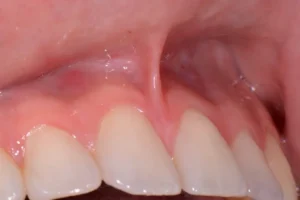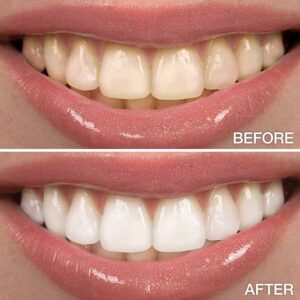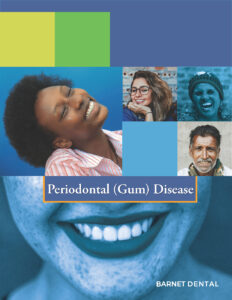Emergency Dental Care USA
Contact
Hours
- Monday: 9:00am – 9:00pm
- Tuesday: 9:00am – 6:00pm
- Wednesday: 9:00am – 9:00pm
- Thursday: 9:00am – 9:00pm
- Friday: 9:00am – 5:00pm
Emergency Dental Care USA, located in the vibrant city of New York, New York, is your trusted provider of immediate dental services when unexpected dental emergencies occur. Committed to delivering prompt relief and comprehensive care for dental issues that cannot wait, our practice offers a wide range of urgent treatment options in a welcoming and comfortable setting. Led by a team of experienced emergency dentists, Emergency Dental Care USA is dedicated to restoring your oral health and alleviating your discomfort as quickly as possible.
Urgent Dental Services
Emergency Examinations
- Immediate Assessments: Thorough evaluations to diagnose and address dental emergencies promptly.
- Pain Management: Quick relief from dental pain through effective anesthesia and pain management techniques.
Emergency Dental Treatments
- Emergency Extractions: Prompt removal of severely damaged or infected teeth causing acute pain or discomfort.
- Emergency Root Canal Therapy: Expedited root canal treatment to alleviate pain and save infected teeth.
Immediate Care
Same-Day Appointments
- Flexible Scheduling: Accommodating same-day appointments for patients in need of urgent dental care.
- Walk-In Services: Convenient walk-in availability for immediate assessment and treatment of dental emergencies.
Efficient Treatment
- Rapid Response: Prompt attention from skilled emergency dentists to address urgent dental needs without delay.
- Streamlined Procedures: Expedited processes to minimize waiting times and efficiently manage dental emergencies.
Patient Care
Compassionate Approach
- Empathetic Staff: Compassionate and understanding dental professionals dedicated to providing comfort and support during stressful situations.
- Clear Communication: Transparent communication about treatment options, costs, and expectations to empower patients to make informed decisions about their dental care.
Aftercare Support
- Post-Treatment Guidance: Detailed instructions and guidance on post-procedure care and pain management to promote optimal healing and recovery.
- Follow-Up Care: Scheduled follow-up appointments to monitor progress, address any concerns, and ensure the successful resolution of dental emergencies.
Frenectomy
A frenectomy is a surgical procedure performed to remove or release a frenulum, a small fold of tissue that connects two structures in the body. In dentistry, frenectomy most commonly refers to the removal or modification of the lingual frenulum (the band of tissue connecting the underside of the tongue to the floor of the mouth) or the labial frenulum (the band of tissue connecting the lips to the gums).
Here's an overview of the frenectomy procedure:
- Indications:
- Lingual frenectomy may be indicated when the lingual frenulum is too short, tight, or thick, resulting in restricted movement of the tongue (a condition known as ankyloglossia or tongue-tie). This restriction can interfere with speech, eating, and oral hygiene.
- Labial frenectomy may be indicated when the labial frenulum is attached too close to the gumline, causing tension or pulling on the gums. This can contribute to gum recession, difficulty in maintaining oral hygiene, and aesthetic concerns.
- Preparation:
- Before performing a frenectomy, the dentist or oral surgeon will conduct a clinical examination to assess the extent of the frenulum attachment and evaluate the patient's oral health.
- Local anesthesia may be administered to numb the area and ensure the patient's comfort during the procedure.
- Procedure:
- Lingual frenectomy: The dentist or oral surgeon uses a scalpel, laser, or other surgical instrument to make an incision in the lingual frenulum, effectively releasing the attachment. The tissue is then carefully dissected and removed.
- Labial frenectomy: A similar technique is used to release the attachment of the labial frenulum from the gumline. The tissue is excised to allow for proper movement and positioning of the lips.
- Postoperative Care:
- After the frenectomy procedure, the patient may experience some discomfort, swelling, or mild bleeding in the surgical area. Pain medication and cold compresses may be recommended to alleviate discomfort and reduce swelling.
- The patient should follow postoperative instructions provided by the dentist or oral surgeon, including dietary restrictions, oral hygiene practices, and any prescribed medications.
- Healing typically occurs within a few days to a week, depending on the extent of the procedure and the individual's healing response.
- Follow-up:
- Follow-up appointments may be scheduled to monitor healing and ensure proper function and mobility of the affected area.
- Speech therapy or exercises may be recommended to optimize tongue movement and function, especially in cases of lingual frenectomy for tongue-tie.
Frenectomy is a relatively simple and straightforward procedure with low risk and high success rates. It can significantly improve oral function, speech, and oral hygiene in patients with restricted frenula. If you or your child are experiencing symptoms related to a tight or restrictive frenulum, it's important to consult with a qualified dental professional for an evaluation and personalized treatment plan.
Teeth Whitening
Teeth whitening, also known as teeth bleaching, is a popular cosmetic dental procedure designed to lighten the color of the teeth and remove stains or discoloration. It is a non-invasive treatment that can enhance the appearance of the smile by creating a brighter, whiter, and more youthful-looking smile. Here's an overview of teeth whitening and its key aspects:
- Purpose of Teeth Whitening:
- Teeth whitening is primarily aimed at improving the aesthetic appearance of the teeth by lightening their shade and removing surface stains caused by various factors, including:
- Consumption of staining foods and beverages (e.g., coffee, tea, red wine).
- Tobacco use (smoking or chewing tobacco).
- Aging, which can lead to natural yellowing or darkening of the teeth.
- Poor oral hygiene habits that result in plaque buildup and surface discoloration.
- Certain medications or medical conditions that affect tooth coloration.
- Types of Teeth Whitening:
- In-Office Whitening: Professional teeth whitening treatments performed in a dental office under the supervision of a dentist. In-office whitening procedures typically involve the application of a high-concentration bleaching agent (e.g., hydrogen peroxide or carbamide peroxide) to the teeth, which is activated by a special light or laser to accelerate the whitening process. In-office whitening offers fast and dramatic results, often achieving several shades of whitening in a single appointment.
- At-Home Whitening: Take-home whitening kits provided by a dentist for use in the comfort of your own home. These kits include custom-fitted whitening trays or strips filled with a lower-concentration bleaching gel, which is worn over the teeth for a specified period (usually a few hours each day or overnight) over the course of several days to weeks. At-home whitening kits offer a more gradual but equally effective approach to whitening and are ideal for individuals who prefer the convenience and flexibility of whitening at their own pace.
- Treatment Process:
- In-Office Whitening: The dentist begins by protecting the gums and soft tissues with a protective barrier or dental dam to minimize the risk of irritation or sensitivity. The bleaching agent is then applied to the teeth and activated with a light source to initiate the whitening process. The gel is left on the teeth for a specific duration, during which it penetrates the enamel to break down stains and discoloration. Multiple cycles of bleaching may be performed as needed to achieve the desired level of whitening.
- At-Home Whitening: The dentist takes impressions of your teeth to create custom-fitted whitening trays that conform snugly to your dental arches. You are provided with the whitening trays, along with the bleaching gel and instructions for use. To use the at-home whitening kit, you fill the trays with the bleaching gel and wear them over your teeth for the prescribed amount of time each day. The whitening process typically takes several days to weeks to achieve noticeable results.
- Safety and Effectiveness:
- Professional teeth whitening treatments performed by a qualified dentist are considered safe and effective when administered according to professional guidelines and manufacturer instructions.
- While teeth whitening is generally well-tolerated, some individuals may experience temporary tooth sensitivity or gum irritation during or after treatment. These side effects typically resolve on their own and can be managed with desensitizing toothpaste or other remedies recommended by your dentist.
- It's important to consult with a dentist before undergoing teeth whitening to ensure that you are a suitable candidate for treatment and to discuss any concerns or expectations you may have.
- Maintenance and Longevity:
- The duration of teeth whitening results can vary depending on individual factors such as oral hygiene habits, dietary choices, and lifestyle factors (e.g., smoking). In general, teeth whitening effects may last from several months to several years.
- To prolong the results of teeth whitening and maintain a bright, healthy smile, it's important to:
- Practice good oral hygiene by brushing and flossing regularly to remove plaque and surface stains.
- Limit consumption of staining foods and beverages or rinse your mouth with water after consuming them.
- Avoid tobacco use, which can cause tooth discoloration and compromise whitening results.
- Schedule regular dental check-ups and professional cleanings to monitor oral health and touch up whitening treatments as needed.
In summary, teeth whitening is a safe, effective, and non-invasive cosmetic dental procedure that can enhance the appearance of your smile by brightening and rejuvenating the natural color of your teeth. Whether performed in a dental office or at home, teeth whitening offers a convenient and reliable solution for achieving a whiter, more radiant smile and boosting your confidence in your appearance.




